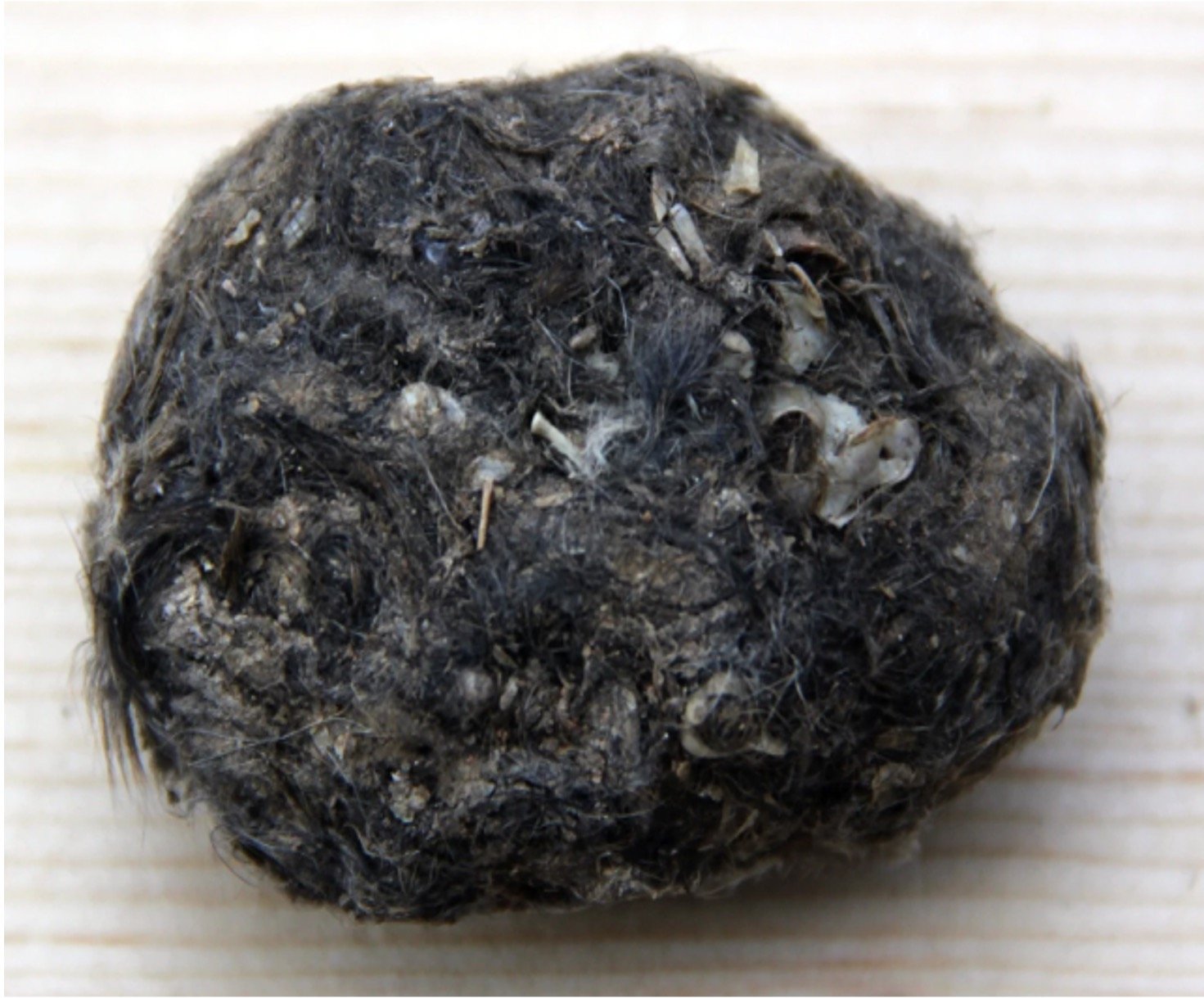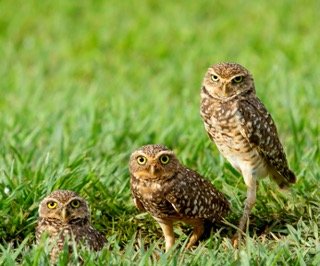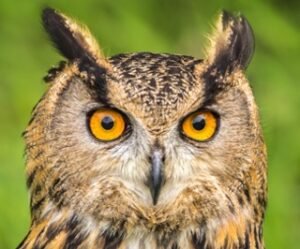
Are Owls Omnivores?
Yes! Owls are occasionally omnivores. In general, majority of owls are carnivores, which means they eat meat. However, despite the fact that they are nocturnal raptors, they are not particularly well-known for their predatory abilities.
The reason for this is that they have difficulties catching and killing larger prey, which is why they prefer to pursue after smaller prey. They do, though, have a vast array of culinary options to choose from, but favor the following:
- Amphibians
- Reptiles
- Insects
- Rodents
Although, owls themselves are occasionally preyed upon by other raptors, such as eagles. Additionally, snakes can infiltrate nests and prey on the eggs and young of the occupants.
If you want to understand the diet of these unique birds, as well as how they hunt their food, by reading this informative article.
Are Owls Dangerous To Humans? All You Need To Know
What Do Owls Eat?
Owls are predatory birds of prey, sometimes known as raptors, which include other birds of prey such as buzzards, eagles, and hawks.
A raptor is a bird with a strong beak and talons, which it utilizes to grab and consume its prey. Although owls are not as common as other raptors, they are nocturnal in nature and hunt at night, when other raptors are sleeping.
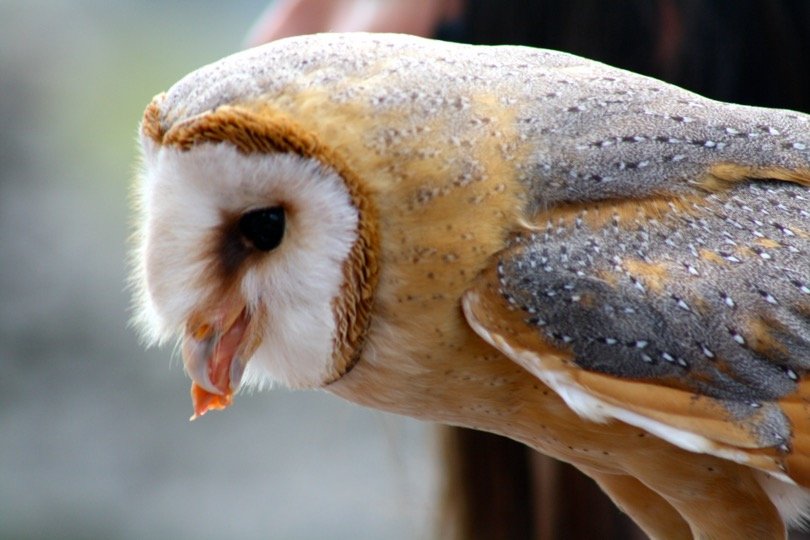
What Is The Standard Diet Of An Owl?
It is easier for owls to catch mice and rats than it is for other animals since they can easily catch them by the tail. They also have a strong preference for hares and rabbits, but these are more difficult to catch due to their speed and the fact that they are quite skilled at escaping.
15 Cutest Owls In The World
A winter’s day in which mice burrow themselves beneath the earth’s surface makes it much more difficult for the bird of prey to locate them. In addition to frogs, lizards, snakes, fish, rabbits, birds, squirrels, and other small critters, an owl’s diet may include other small creatures.

Another intriguing fact about owls is that they only eat live prey, which makes them a unique species.
In the event that they encounter a dead or decaying animal, they will continue on their quest since they have a highly developed predatory drive and, for the most part, the search provides them with greater satisfaction than tasting what they have captured.
Do All Owl Species Consume Same Food?
The diet of the owl varies greatly depending on the species, which number approximately 250 and may be found on every continent except Antarctica. For example, the eagle-owl (Bubo bubo) is an excellent hunter who has little trouble deciding what to eat.
What Eats Owls? 7 Predators That Eat Owls
Other owl species that are less skilled at hunting do not have this ability and are more conformist in their behavior. This is the situation with the little elf owl (Micrathene whitneyi), which, due to its small size, relies mostly on beetles and moths as its primary food source.

Other owls, such as the flammulated owl (Psiloscops flammeolus), likewise eat insects nearly entirely. Furthermore, the buffy fish-owl (Ketupa ketupu) is a specialised hunter and catcher of fish, which is its primary source of nutrition.
A few other species, such as the vermiculated fishing owl (Scotopelia bouvieri), which can be found in Sub-Saharan Africa, feed primarily fish as well.
5 Simple & Proven Ways To Attract Owls To Your Yard
How Do Owls Feed?
Owls (as well as other birds) have beaks rather than teeth, which prevents them from chewing their food as they would otherwise. They shred apart their giant prey and consume their small prey whole.

Because they swallow a large portion of their prey whole, they end up eating a large amount of fur, feathers, claws, and bones as part of their diet. However, because these foods are indigestible, owls have two stomachs:
• Glandular Stomach: This one resembles the stomach of a human being. It produces stomach acids as well as a variety of enzymes that aid in the digestion of soft tissue such as skin, muscle, and fatty tissue.
• Gizzard: It does not create acids or enzymes, and it does not digest the food that is swallowed by the stomach. It serves as a filter, collecting all of the substances that cannot be processed by the body (like fur and bones). This gizzard resembles a very muscular stomach in that it compresses all of the fur, bones, teeth, feathers and claws into a tight ball. It’s similar to a garbage compactor!
Do Owls Hoot During the Day? All You Need To Know
Following its meal, the owl vomits a little packet of food called a pellet, which looks similar to a ball of hair that a cat might regurgitate. As a result, if you come across an owl pellet while wandering through the forest, you will be able to identify all of the animal bones that the owl consumed!
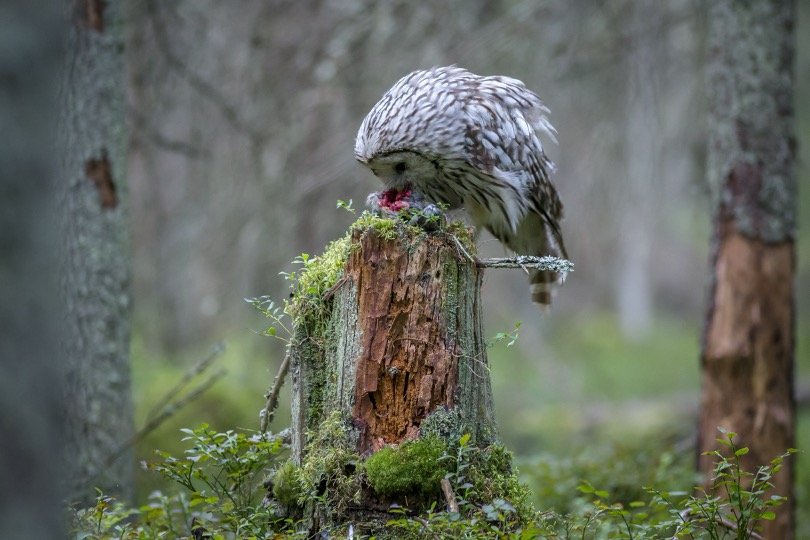
The pellets are actually taken apart by ornithologists and other scientists in order to determine what is inside them. Despite the fact that it may sound disgusting, it is a great method to learn more about an owl’s diet!
It is also a very precise method of determining the amount of prey items that the bird has consumed. As a matter of fact, owl pellets are critical for scientific studies since they provide researchers with a clear image of what the bird eats when, and how often.
6 Reasons – Why Do Owls Bob Their Heads?
It would be exceedingly difficult to follow the animal around and observe it eat, especially at night, when the majority of owls are active and feed. This means that scientists will have to analyze objects that may appear to be a little unpleasant, such as pellets.
What Makes Owls Effective Hunters?
In order to hunt their prey, owls have a few physiological modifications that help them to succeed.
1. Owls Have Exceptional Night Vision
On the one hand, owls have superb night vision:
• Its eyes are huge and cylindrical in shape: Unlike humans, who have round eyes that are fashioned like a cornflower, owl eyes are cylindrical in shape, similar to that of a grape. The cylindrical form of the eyeball, on the other hand, prevents the eyeball from rolling into the eye socket. Indeed, because their eyeball is in a fixed location, the owls are unable to see around without moving their head in some way.
Sleeping Owls Are So Adorable: Pictures & Fun Fact
• They have a field of vision of 270 degrees: In order to compensate for the fact that their eyes are fixed, owls have twice as many vertebrae in their necks as humans, which allows them to tilt their heads 270° in both directions.
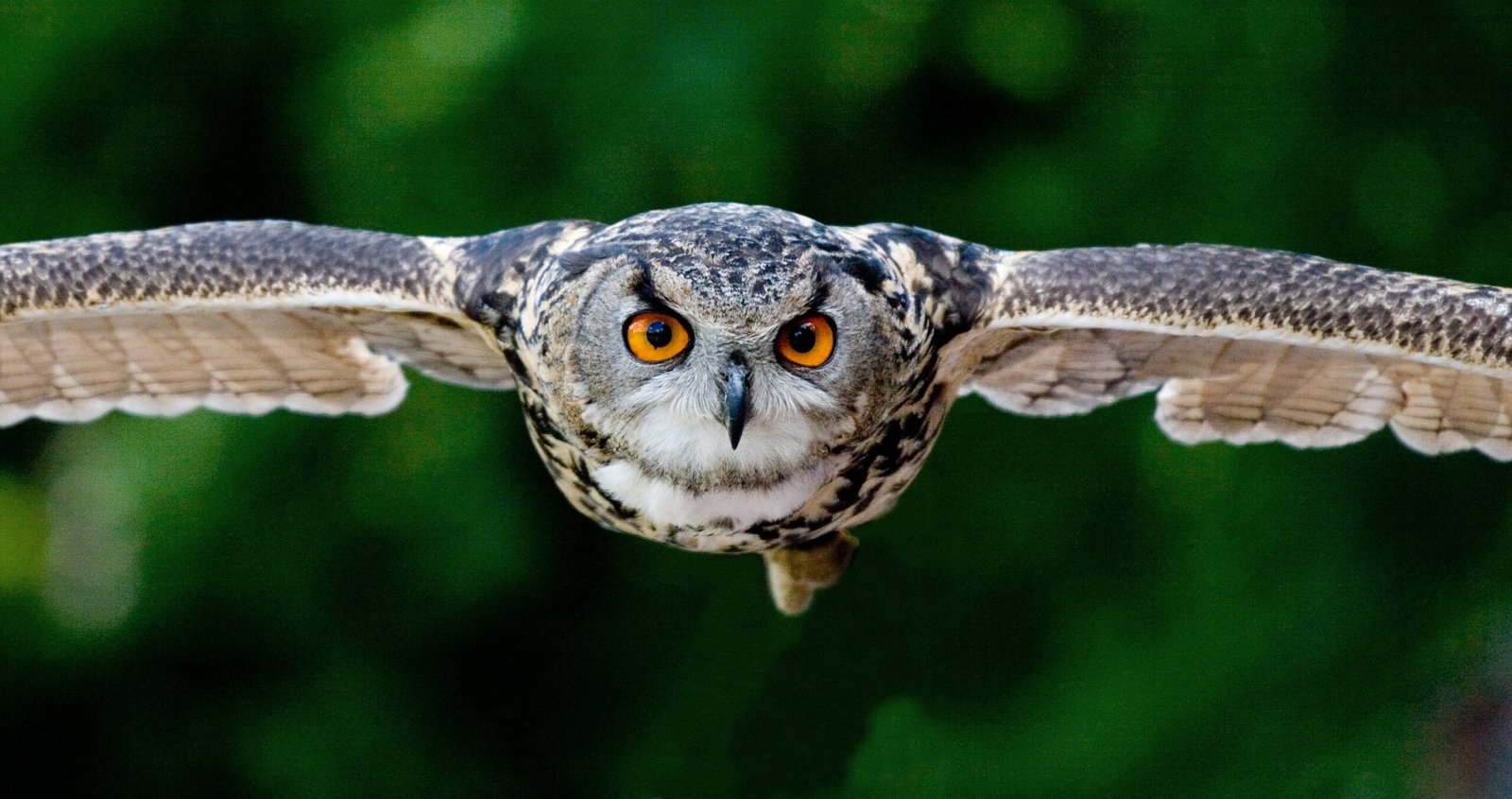
• They have more rods in their retina: The retina of all vertebrates’ eyes is made up of photoreceptor cells known as rods and cones, which are used to detect light. When it comes to night vision, rods are used, whereas cones are used to discern between colors. In comparison to other animals, owls have larger eyes that include a greater number of rods, which enables them to have excellent night vision.
• Interesting fact: Observe the retina of a diurnal animal that hunts during the day, or even of a human, under a microscope, and you will notice that their eyes contain more cones, which aid in the detection of different hues.
2. Owls Have Terrific Hearing
Considering that owls have enormous eyes and amazing eyesight, one would assume that they use their eyes for hunting purposes. Surprisingly, owls rely primarily on sound to locate prey.
Can Owls Rotate Their Heads? All You Need To Know
The slightly unkempt hairs on their heads aren’t actually ears, despite what you may imagine based on their appearance. These are just bands of feathers that convey the mood of an owl, much like the way a cat swings its tail or ears to express its mood.

The owl’s ears are actually hidden under the tufts of feathers on its head. They are asymmetrically positioned, which means that the noises arrive at the owl’s ears at various times. This assists it in determining the exact location of a sound source.
The owl does really adjust its head as it approaches closer to its prey, in order to find the precise position at which the sound reaches both of its ears at the same time.
Why Do Owls Hoot? All You Need To Know
Interesting fact: In the winter, the Snowy owl can detect the sound of voles and mice running under the snow and swoop down towards the source of the sound, trapping prey through the ice and snow. There is an imprint of the owl’s wings left behind, which is distinctive and lovely, and can occasionally be mistaken for a snow angel.
3. Owls Have Silent Flight Skill
Due to the way the air passes over their wings and body, the majority of birds create some type of flapping or rustling sound when they are in flight. Owls, on the other hand, have special features that enable them to fly silently:
• A comb-like leading edge of the primary wings cuts the air into micro-turbulences that roll to the end of the wing, giving them their distinctive appearance.
• On their legs and feet, they have small fluffy feathers that add to their overall appearance. Even more so, the down feathers assist to muffle the sound of the wind even further.
• In addition, the form of the wings provides them with greater lift, which allows them to lower the number of flaps they must use. For these reasons, owls use their silent flight to hunt small prey that is walking around on dry land in relative peace and quiet.
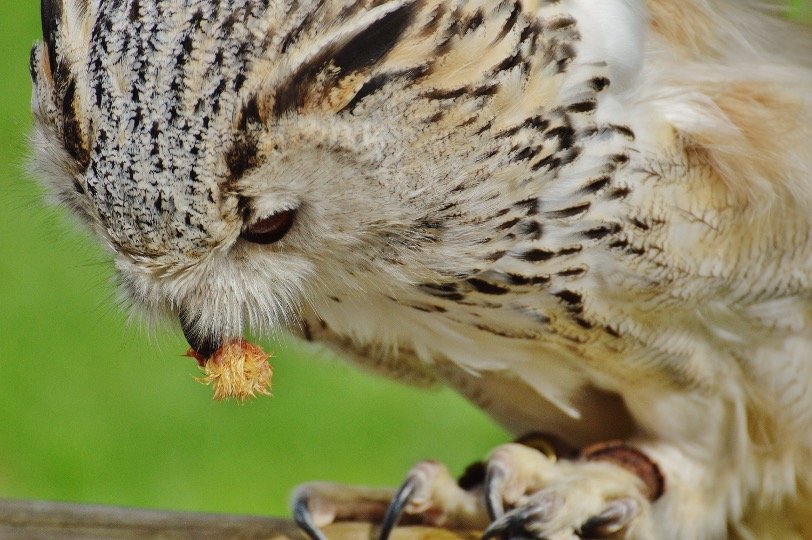
What Animals Do Owls Eat?
Animals like mice, rats, bats, squirrels and rabbits make up a large part of what most owl species like to eat. However, these birds also enjoy eating reptiles such as snakes and lizards.
Do Owls Eat Reptiles?
According to Cornell University, one of many websites dedicated to describing owl eating habits, there are a variety of small reptiles that make up owl diets. Some of these include snakes, lizard, geckos, skink, etc. Snakes and lizard make up more than 50 percent of all reptiles consumed by great horned owls.
Do Owls Eat Birds?
Being night creatures, by nature, are often nocturnal hunters, many species of owl feed primarily on birds. In fact, there are dozens of different types of bird species—from robins and sparrows to kestrels and cranes—that an owl could potentially prey upon. While most hunting occurs at night or in low-light conditions, some species of owl have daytime activities as well.
Do Owls Eat Snakes?
It turns out, they do! There are two primary reasons why snakes are on an owl’s menu: 1) because they taste good, and 2) because they’re easily captured. Snakes, being reptiles, are ectothermic (cold-blooded), so when it gets cold in their environment they can’t move around quickly enough to hunt down prey.
Do Owls Eat Fish?
The great horned owl, for example, feeds mostly on small mammals like rabbits and squirrels but they also like fishes. Fish are a staple in its diet, however—it’s also been known to hunt other similar water organisms.
Do Owls Eat Insects?
Owls are aerial predators that consume a wide variety of different types of insects. Owls mostly feed on insects such as beetles, moths, flies, cicadas and grasshoppers. They also target large cockroaches and even scorpions if they find them in their habitat.
Do Owls Eat Other Predators?
They need a lot of food. The great horned owl, for example, can eat almost 1,000 rodents per year. Since they often hunt at night, they typically feed on small mammals like rats and squirrels—which are dangerous pests in their own right.

Do Owls Eat Mice and Small Rodents?
For small rodents like mice and rats, an owl’s sharp talons are a death sentence. But these powerful talons aren’t just reserved for tiny animals. Owls also have a taste for large prey, and they use their talons to snatch up rabbits, squirrels and even other rodents. These predators can feed on 50 pounds of flesh every day!
Do Owls Eat Rabbit?
Owls generally hunt in open areas near forests and fields, although some species are known for hunting in or near water. They feed on nearly anything they can catch—rodents, fish, insects, reptiles, amphibians, birds and even rabbits.
Do Owls Eat Seeds?
Although they’re generally carnivorous (meat-eaters), owls will occasionally consume seeds and fruit if prey is scarce.
Take Away Message
Owls are carnivorous birds with special traits that make them ideal for hunting small prey, such as mice and rats. Their most common target animals are small rodents such as mice and voles, which is extremely beneficial for farmers who frequently witness their plantations being decimated by these voracious little pests. In addition, most owls are also capable of capturing larger prey, like rabbits, squirrels, and even skunks, even though these are not their favorite prey species.

